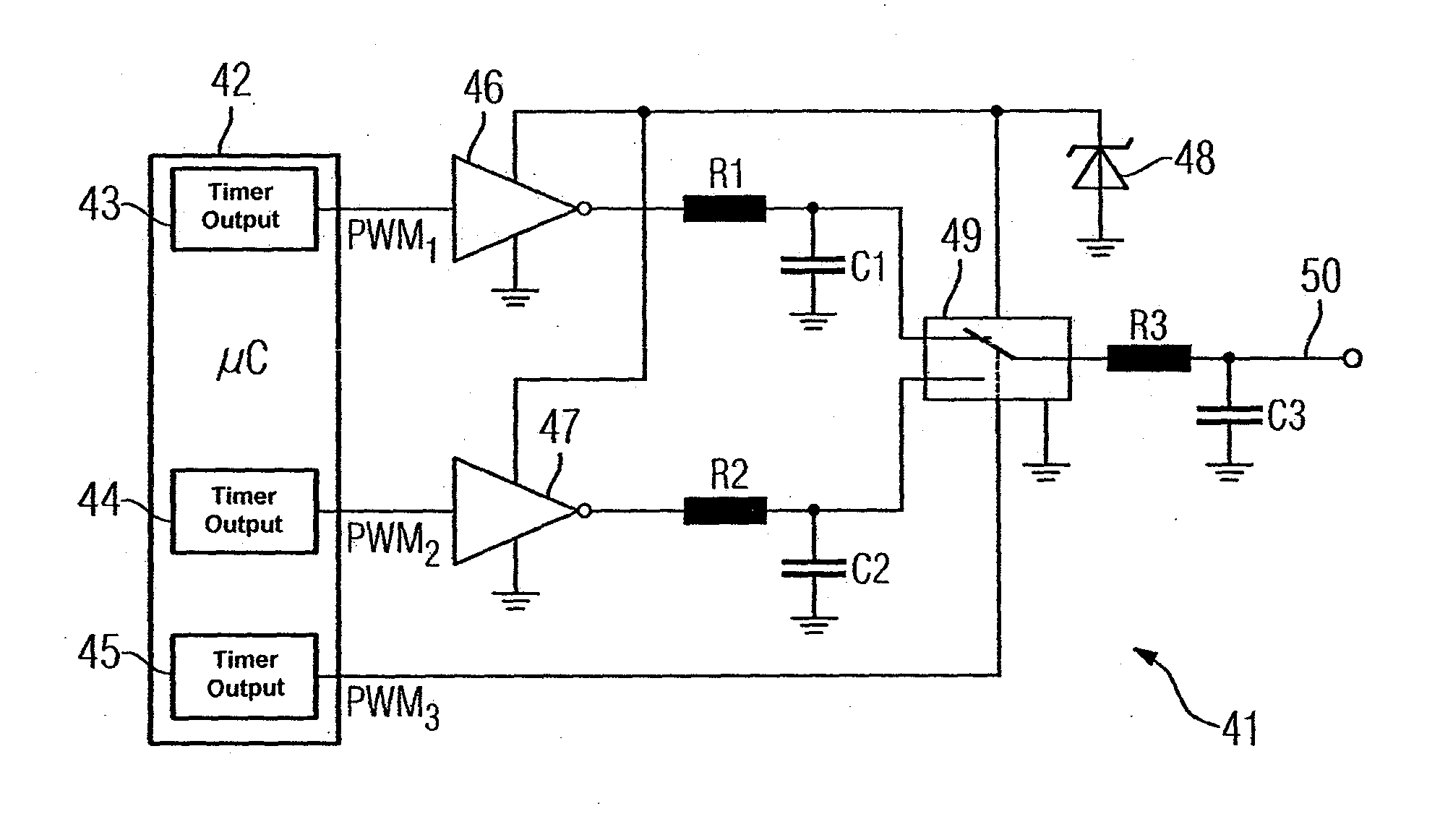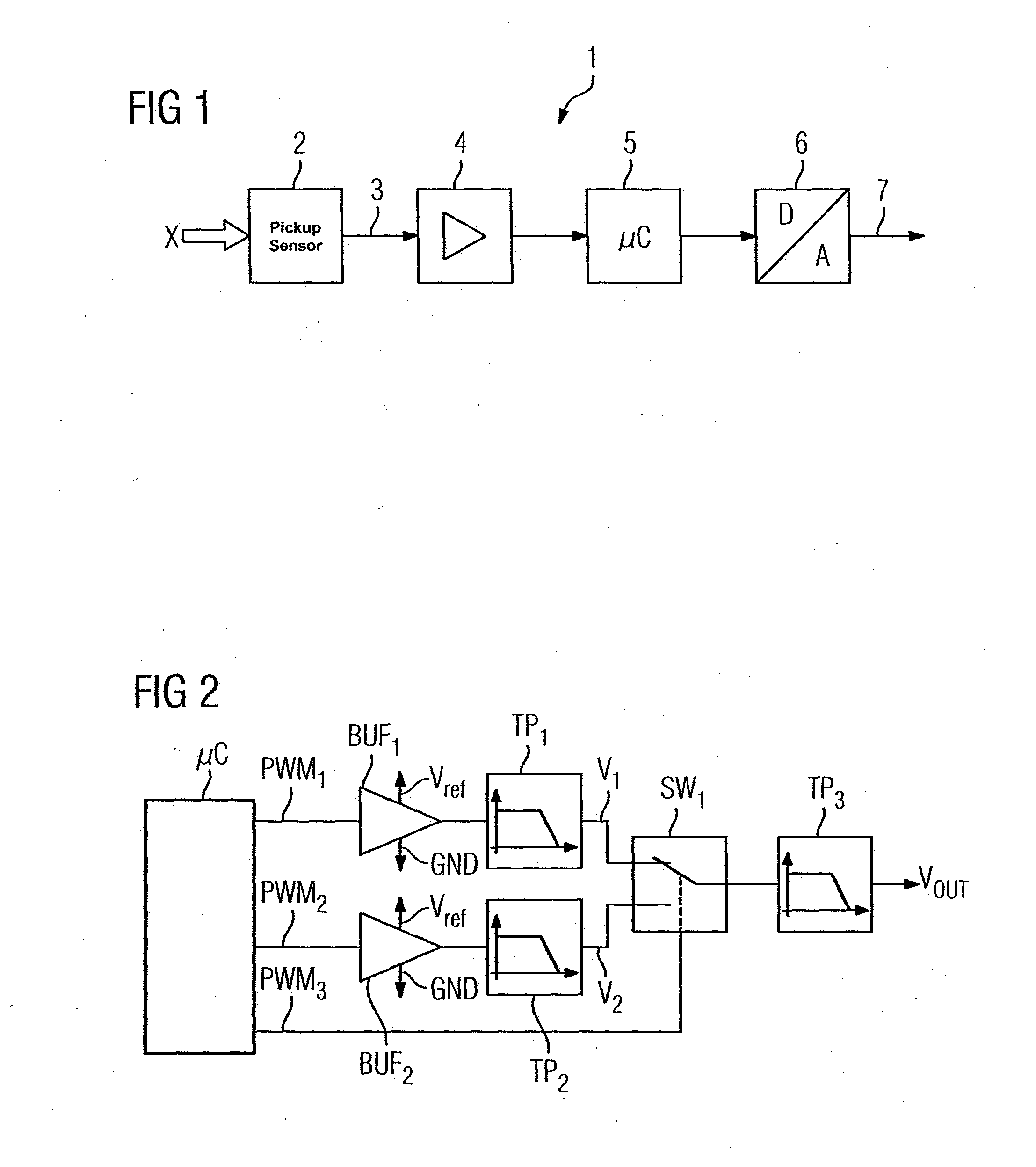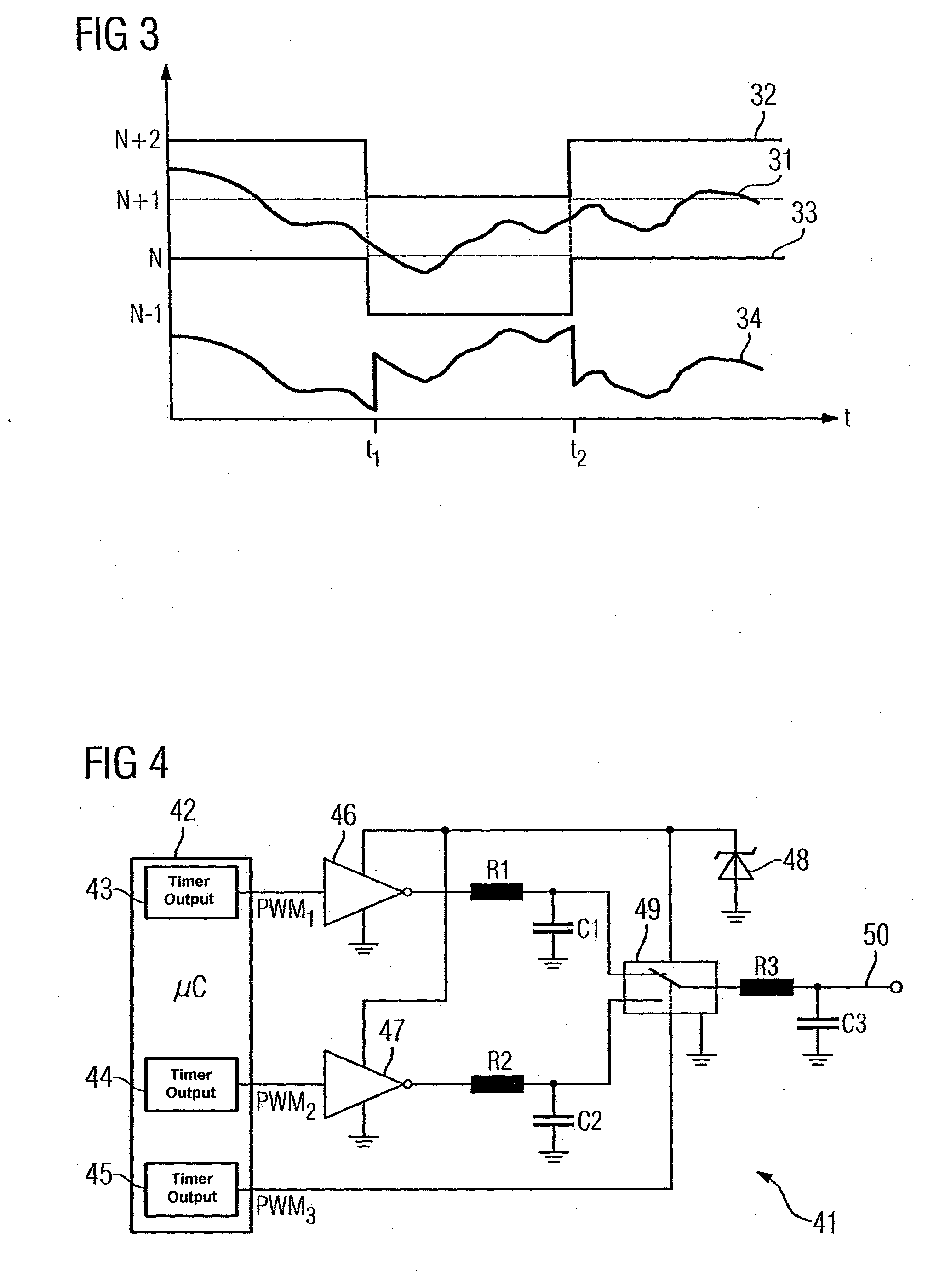Field Device Having an Analog Output
a field device and output technology, applied in the field of measuring transducers, can solve the problems of high electric power consumption, high cost, and limited available energy, and achieve the effect of reducing power consumption and achieving greater dynamic rang
- Summary
- Abstract
- Description
- Claims
- Application Information
AI Technical Summary
Benefits of technology
Problems solved by technology
Method used
Image
Examples
Embodiment Construction
[0020]With reference to FIG. 1, a measuring transducer 1 for measuring a physical or chemical variable X of a process has a pickup sensor 2 which converts the variable into a measurement signal 3. The measurement signal 3 is amplified and digitized in a preprocessing stage 4. The measurement signal preprocessed in this way is supplied in digital form to a microcontroller 5 which, for example, compensates for non-linearities and temperature effects and calculates the measured value to be output. The digital measured value calculated in the microcontroller 5 is converted in a digital / analog converter 6 into an analog output signal which is output via a 4-20 mA interface 7 for further use in a process engineering plant in which the measuring transducer 1 is used.
[0021]For purposes of digital / analog conversion, a microcontroller μC shown in FIG. 2 generates three time signals PWM1, PWM2 and PWM3. The time signals PWM1 and PWM2 are determined in accordance with a coarse portion of the di...
PUM
 Login to View More
Login to View More Abstract
Description
Claims
Application Information
 Login to View More
Login to View More - R&D
- Intellectual Property
- Life Sciences
- Materials
- Tech Scout
- Unparalleled Data Quality
- Higher Quality Content
- 60% Fewer Hallucinations
Browse by: Latest US Patents, China's latest patents, Technical Efficacy Thesaurus, Application Domain, Technology Topic, Popular Technical Reports.
© 2025 PatSnap. All rights reserved.Legal|Privacy policy|Modern Slavery Act Transparency Statement|Sitemap|About US| Contact US: help@patsnap.com



